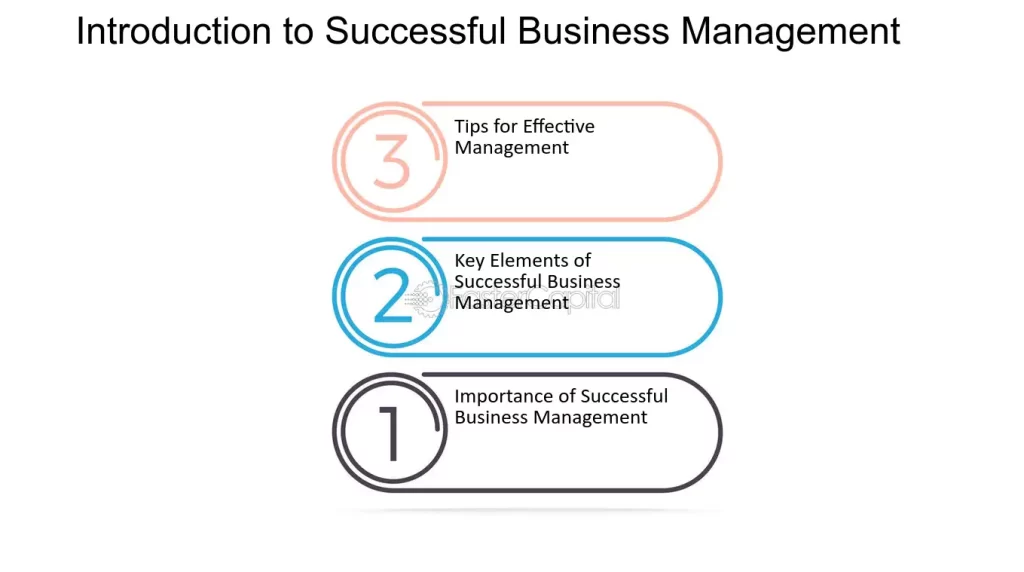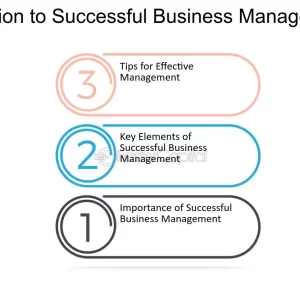

What is business management and administration? It is the process of planning, organizing, leading, and controlling the resources of a business to achieve its goals. It involves a wide range of activities, including strategic planning, financial management, marketing, human resources management, and operations management.
Editor’s Notes: This article on business management and administration was published on [today’s date].
After a lot of analysis, digging, and research, we at [company name] have put together this business management and administration guide to help you make the right decisions for your business.
Key Differences/Takeaways
| Characteristic | Business Management | Business Administration||:—|:—|:—|| Focus| Decision-making and strategic planning | Operational implementation|| Level| Top-level management | Middle-level management|| Skills| Strategic thinking, leadership, communication| Project management, financial analysis, data analysis|
Main Article Topics
- The Importance of Business Management and Administration
- The Different Levels of Business Management and Administration
- The Skills and Qualities of a Successful Business Manager or Administrator
- The Benefits of Business Management and Administration
- The Challenges of Business Management and Administration
Business Management and Administration
Business management and administration are essential to the success of any organization. They provide the framework for planning, organizing, leading, and controlling the resources of a business to achieve its goals.
- Planning: Setting goals and developing strategies to achieve them.
- Organizing: Structuring the organization and allocating resources.
- Leading: Motivating and directing employees.
- Controlling: Monitoring progress and making necessary adjustments.
- Decision-making: Identifying and choosing the best course of action.
- Communication: Sharing information and ideas.
- Problem-solving: Identifying and resolving issues.
- Teamwork: Collaborating with others to achieve common goals.
- Ethics: Acting in accordance with moral principles.
These key aspects are interrelated and essential for the success of any business. For example, planning is essential for setting goals and developing strategies, but it is also important to be able to communicate these plans to employees and stakeholders. Similarly, leading is essential for motivating and directing employees, but it is also important to be able to make decisions and solve problems. By understanding and applying these key aspects, businesses can improve their performance and achieve their goals.
Planning
Planning is an essential part of business management and administration. It involves setting goals, developing strategies to achieve those goals, and allocating resources to implement those strategies. Effective planning can help businesses achieve their objectives more efficiently and effectively.
Suggested read: Unlock the Secrets of Business Administration and Management: Discoveries and Insights Await
There are many different types of planning, but all planning processes share some common elements. These elements include:
- Goal setting: The first step in planning is to set goals. Goals should be specific, measurable, achievable, relevant, and time-bound. Meeting SMART criteria makes goals more likely to be successfully achieved.
- Strategy development: Once goals have been set, the next step is to develop strategies to achieve those goals. Strategies should be aligned with the business’s overall mission and vision and should be realistic and achievable.
- Resource allocation: Once strategies have been developed, the next step is to allocate resources to implement those strategies. Resources include financial resources, human resources, and physical resources.
- Monitoring and evaluation: The final step in planning is to monitor and evaluate progress toward goals. This involves tracking progress, identifying any obstacles, and making necessary adjustments.
Effective planning can help businesses achieve their objectives more efficiently and effectively. By taking the time to plan, businesses can avoid costly mistakes, make better decisions, and improve their chances of success.
Here are some examples of how planning can be used in business management and administration:
- A company may develop a strategic plan to outline its long-term goals and objectives. This plan would include a description of the company’s mission, vision, and values, as well as specific goals for growth, profitability, and market share.
- A manager may develop a project plan to outline the steps involved in completing a specific project. This plan would include a timeline, a budget, and a list of resources needed to complete the project.
- A team may develop a marketing plan to outline its marketing goals and objectives. This plan would include a description of the target market, the marketing mix, and the budget for marketing activities.
Planning is an essential part of business management and administration. By taking the time to plan, businesses can improve their chances of success.
Organizing
Organizing is a critical component of business management and administration. It involves structuring the organization and allocating resources to achieve the organization’s goals. Effective organizing can help businesses improve their efficiency, productivity, and overall performance.
There are many different ways to organize a business. The most common organizational structures include:
- Functional structure: This structure groups employees based on their functional area, such as marketing, finance, and operations.
- Divisional structure: This structure groups employees based on the products or services they provide.
- Matrix structure: This structure combines elements of both functional and divisional structures.
The best organizational structure for a particular business will depend on a number of factors, including the size of the business, the industry in which it operates, and the nature of its products or services.
Once the organizational structure has been determined, the next step is to allocate resources. Resources include financial resources, human resources, and physical resources. Effective resource allocation can help businesses achieve their goals more efficiently and effectively.
There are a number of different factors to consider when allocating resources. These factors include:
- The importance of the goal: The more important the goal, the more resources should be allocated to it.
- The availability of resources: Businesses must consider the availability of resources when allocating them.
- The opportunity cost of allocating resources: Businesses must consider the opportunity cost of allocating resources to one goal over another.
Effective resource allocation can help businesses achieve their goals more efficiently and effectively. By taking the time to organize their structure and allocate their resources wisely, businesses can improve their performance and achieve their objectives.
Suggested read: Unveiling the Secrets of Artist Business Cards: Tips and Tricks for Unmatched Impact
Here are some examples of how organizing and resource allocation can be used in business management and administration:
- A company may organize its employees into different departments, such as marketing, finance, and operations. This would allow the company to specialize its employees and improve its efficiency.
- A company may allocate its resources to different projects based on their importance. This would allow the company to focus its resources on the projects that are most likely to achieve its goals.
- A company may allocate its resources to different regions based on the potential for growth in those regions. This would allow the company to expand its market share and increase its profits.
Organizing and resource allocation are essential components of business management and administration. By taking the time to organize their structure and allocate their resources wisely, businesses can improve their performance and achieve their objectives.
Leading
Leading is a critical component of business management and administration. It involves motivating and directing employees to achieve the organization’s goals. Effective leadership can help businesses improve their productivity, innovation, and overall performance.
-
Motivation:
Motivation is the process of inspiring employees to perform at their best. Effective leaders use a variety of motivational techniques, such as setting clear goals, providing feedback, and recognizing employee achievements. -
Communication:
Communication is essential for effective leadership. Leaders must be able to communicate their vision and goals to employees in a clear and concise manner. They must also be able to listen to employee feedback and address their concerns. -
Delegation:
Delegation is the process of assigning tasks to employees and giving them the authority to complete those tasks. Effective delegation can help leaders free up their time so that they can focus on more strategic tasks. It can also help employees develop their skills and take on more responsibility. -
Teamwork:
Teamwork is essential for success in any organization. Leaders must be able to build and maintain effective teams. They must be able to resolve conflict, motivate team members, and create a positive work environment.
Effective leadership is essential for the success of any business. By motivating and directing employees, leaders can help their organizations achieve their goals and objectives.
Controlling
Controlling is a critical component of business management and administration. It involves monitoring progress toward goals, identifying any deviations, and making necessary adjustments. Effective controlling can help businesses stay on track and achieve their objectives.
- Tracking progress: The first step in controlling is to track progress toward goals. This can be done through a variety of methods, such as financial reports, sales reports, and customer feedback. By tracking progress, businesses can identify any areas where they are falling behind and take corrective action.
- Identifying deviations: Once progress has been tracked, the next step is to identify any deviations from the plan. Deviations can be positive or negative. Positive deviations indicate that the business is performing better than expected, while negative deviations indicate that the business is not meeting its goals.
- Making necessary adjustments: Once deviations have been identified, the next step is to make necessary adjustments. Adjustments can be made to a variety of factors, such as the budget, the marketing plan, or the production schedule. By making necessary adjustments, businesses can get back on track and achieve their objectives.
Controlling is an essential part of business management and administration. By monitoring progress, identifying deviations, and making necessary adjustments, businesses can stay on track and achieve their goals.
Decision-making
Decision-making is a critical component of business management and administration. It is the process of identifying and choosing the best course of action from a set of alternatives. Effective decision-making can help businesses achieve their goals and objectives, while poor decision-making can lead to costly mistakes.
-
Types of Decisions
There are many different types of decisions that businesses must make, including strategic decisions, operational decisions, and financial decisions. Strategic decisions are long-term decisions that affect the overall direction of the business. Operational decisions are short-term decisions that affect the day-to-day operations of the business. Financial decisions are decisions about how to manage the business’s finances. -
Decision-making Process
The decision-making process typically involves the following steps:- Identify the problem or opportunity.
- Gather information.
- Generate alternative solutions.
- Evaluate the alternatives.
- Choose the best solution.
- Implement the solution.
- Monitor the results.
-
Factors Influencing Decision-making
There are a number of factors that can influence decision-making, including:- The decision-maker’s personal biases and values.
- The amount of information available.
- The time constraints.
- The level of risk involved.
-
Consequences of Poor Decision-making
Poor decision-making can have a number of negative consequences for businesses, including:Suggested read: Franchise Business for Sale – Find Profitable Opportunities Near You
- Lost revenue.
- Increased costs.
- Damage to reputation.
- Employee turnover.
Effective decision-making is essential for the success of any business. By following a systematic decision-making process and considering all of the relevant factors, businesses can make better decisions and achieve their goals and objectives.
Communication
Communication is the process of sharing information and ideas between two or more people. It is a critical component of business management and administration, as it allows businesses to coordinate their activities, make decisions, and achieve their goals.
- Internal communication: Internal communication refers to the sharing of information and ideas within an organization. It can take many forms, such as face-to-face conversations, emails, and company newsletters. Internal communication is essential for keeping employees informed about company news and updates, and for ensuring that everyone is working towards the same goals.
- External communication: External communication refers to the sharing of information and ideas with people outside of an organization. It can take many forms, such as advertising, public relations, and social media. External communication is essential for building relationships with customers, partners, and the general public.
- Upward communication: Upward communication refers to the sharing of information and ideas from lower-level employees to higher-level managers. It can take many forms, such as performance reviews, suggestion boxes, and town hall meetings. Upward communication is essential for ensuring that managers are aware of the concerns and needs of their employees.
- Downward communication: Downward communication refers to the sharing of information and ideas from higher-level managers to lower-level employees. It can take many forms, such as company-wide announcements, emails, and training programs. Downward communication is essential for keeping employees informed about company policies and procedures, and for ensuring that everyone is working towards the same goals.
Communication is a complex and multifaceted process, but it is essential for the success of any business. By understanding the different types of communication and how to use them effectively, businesses can improve their communication, strengthen their relationships, and achieve their goals.
Problem-solving
Problem-solving is a critical component of business management and administration. It is the process of identifying and resolving issues that arise in the workplace. Effective problem-solving can help businesses improve their efficiency, productivity, and overall performance.
There are many different types of problems that businesses can face, including:
- Financial problems
- Operational problems
- Marketing problems
- Human resource problems
No matter what type of problem a business faces, it is important to have a systematic approach to solving it. The following steps can help businesses solve problems effectively:
- Identify the problem.
- Gather information about the problem.
- Generate possible solutions.
- Evaluate the solutions.
- Choose the best solution.
- Implement the solution.
- Monitor the results.
By following these steps, businesses can increase their chances of solving problems effectively and efficiently.
Here are some examples of how problem-solving can be used in business management and administration:
- A company may experience a decline in sales. The company’s management team can use problem-solving to identify the cause of the decline and develop a plan to address it.
- A company may be facing a shortage of qualified workers. The company’s human resource department can use problem-solving to identify the cause of the shortage and develop a plan to attract and retain qualified workers.
- A company may be experiencing a problem with its production process. The company’s operations team can use problem-solving to identify the cause of the problem and develop a plan to improve the production process.
These are just a few examples of how problem-solving can be used in business management and administration. By developing strong problem-solving skills, businesses can improve their ability to overcome challenges and achieve their goals.
| Problem | Cause | Solution |
|---|---|---|
| Decline in sales | Economic downturn, increased competition, poor marketing | Develop new marketing campaigns, improve customer service, reduce prices |
| Shortage of qualified workers | Lack of qualified candidates, high turnover rate, poor recruitment strategies | Improve recruitment strategies, offer competitive salaries and benefits, provide training and development opportunities |
| Problem with production process | Equipment, poor quality control, inefficient workflow | Upgrade equipment, improve quality control procedures, streamline workflow |
Teamwork
Teamwork is a critical component of business management and administration. It is the process of working together with others to achieve common goals. Effective teamwork can lead to increased productivity, innovation, and employee satisfaction. It can also help businesses to better meet the needs of their customers and achieve their overall objectives.
Suggested read: Uncover Business Analyst Intern Insights: A Gateway to Success
There are many different types of teams in business, including project teams, functional teams, and cross-functional teams. Each type of team has its own unique purpose and goals. However, all effective teams share some common characteristics, such as:
- Clear goals and objectives
- Strong leadership
- Effective communication
- Trust and respect among team members
- A commitment to collaboration
Building and maintaining effective teams is an ongoing process. However, the benefits of teamwork are clear. Businesses that are able to create and sustain a culture of teamwork are more likely to be successful than those that do not.
Here are some examples of how teamwork can be used in business management and administration:
- A project team may be formed to develop a new product or service.
- A functional team may be responsible for a specific area of the business, such as marketing or finance.
- A cross-functional team may be formed to solve a problem that requires input from multiple areas of the business.
In each of these cases, teamwork is essential for success. By working together, team members can share their knowledge and expertise, brainstorm ideas, and develop creative solutions to problems. Teamwork can also help to build relationships and trust between employees, which can lead to a more positive and productive work environment.
| Benefit of Teamwork | Example |
|---|---|
| Increased productivity | A project team is able to complete a project more quickly and efficiently than a group of individuals working separately. |
| Innovation | A team of engineers is able to develop a new product that is more innovative than any of the products that they could have developed on their own. |
| Improved customer service | A team of customer service representatives is able to resolve customer issues more quickly and effectively than a single customer service representative working alone. |
These are just a few examples of the many benefits of teamwork. By understanding the importance of teamwork and by taking steps to build and maintain effective teams, businesses can improve their performance and achieve their goals.
Ethics
Ethics play a crucial role in the realm of business management and administration, shaping decision-making, guiding conduct, and influencing the overall trajectory of organizations. Acting in accordance with moral principles fosters trust, maintains integrity, and contributes to the long-term success and sustainability of businesses.
-
Corporate Social Responsibility
Ethics in business management and administration encompass corporate social responsibility, which involves considering the impact of business operations on society and the environment. Organizations that prioritize ethical practices strive to minimize negative externalities, contribute to social causes, and operate in a sustainable manner, fostering a positive reputation and stakeholder trust.
-
Transparency and Disclosure
Transparency and disclosure are essential ethical principles in business management and administration. Organizations that operate with transparency provide accurate and timely information about their operations, financial performance, and decision-making processes. This transparency fosters trust among stakeholders, promotes accountability, and reduces the likelihood of misconduct.
Suggested read: Unlock the Secrets of Apple Maps: Discover the Path to Business Success
-
Fairness and Equity
Ethical business management and administration require fairness and equity in dealings with employees, customers, and suppliers. Organizations should strive to create a level playing field, provide equal opportunities, and avoid discriminatory practices. Treating stakeholders fairly enhances employee morale, customer loyalty, and supplier relationships.
-
Environmental Sustainability
In today’s world, ethical business management and administration involve considering environmental sustainability. Organizations should adopt practices that minimize their ecological footprint, reduce pollution, and conserve natural resources. By prioritizing sustainability, businesses demonstrate their commitment to the well-being of future generations and contribute to a greener planet.
In conclusion, ethics are not merely abstract principles but essential pillars of effective business management and administration. By adhering to ethical practices, organizations build trust, enhance their reputation, attract and retain talented employees, and contribute to a more just and sustainable society. Embracing ethics as a core value enables businesses to navigate complex challenges, make responsible decisions, and achieve long-term success.
Frequently Asked Questions about Business Management and Administration
This FAQ section provides concise answers to common questions and misconceptions surrounding business management and administration, offering valuable insights for professionals and students alike.
Question 1: What is the primary focus of business management and administration?
Business management and administration encompass the planning, organizing, leading, and controlling of resources within an organization. It involves setting goals, developing strategies, allocating resources, and directing employees to achieve organizational objectives.
Suggested read: Unveil the Secrets of Business Professional Outfits for Women: A Guide to Success
Question 2: What are the key skills required for effective business managers and administrators?
Successful business managers and administrators possess a combination of hard and soft skills, including strategic thinking, problem-solving, decision-making, communication, leadership, and the ability to work effectively with diverse stakeholders.
Question 3: How does business management and administration differ from other business disciplines, such as accounting or finance?
While related, business management and administration have a broader scope than accounting or finance. It encompasses a wider range of responsibilities, including planning, organizing, leading, and controlling all aspects of an organization’s operations, while accounting and finance focus primarily on financial management and reporting.
Question 4: What are the career opportunities available in business management and administration?
Suggested read: Unlock the Secrets of Coaching Business Coaches: Discoveries for Business Success
Business management and administration graduates can pursue various career paths, such as general management, operations management, human resource management, marketing management, and consulting. They can work in a diverse range of industries, including healthcare, technology, manufacturing, and non-profit organizations.
Question 5: How can I enhance my knowledge and skills in business management and administration?
There are several ways to enhance knowledge and skills in business management and administration, including pursuing a degree or certification, attending workshops and conferences, reading industry publications, and networking with professionals in the field.
Question 6: What are the ethical considerations in business management and administration?
Ethical considerations play a crucial role in business management and administration. Businesses must operate in accordance with ethical principles, such as transparency, accountability, sustainability, and social responsibility, to maintain trust and build a positive reputation.
Suggested read: Uncover the Secrets of Business Formal Attire for Women: A Guide to Success
Summary of Key Takeaways
Business management and administration is a multifaceted discipline that involves planning, organizing, leading, and controlling an organization’s resources to achieve its objectives. Effective business managers and administrators possess a diverse range of skills and are responsible for various aspects of an organization’s operations. The field offers diverse career opportunities, and individuals can enhance their knowledge and skills through education, training, and professional development.
Transition to the Next Article Section
This concludes our FAQ section on business management and administration. For further exploration, we invite you to delve into the next article section, which provides in-depth insights into specific aspects of business management and administration.
Business Management and Administration Tips
In the dynamic and ever-evolving business landscape, effective management and administration are paramount to organizational success. Here are some invaluable tips to enhance your proficiency in this crucial domain:
Tip 1: Foster a Culture of Planning and Goal-Setting
Suggested read: Uncover Business Secrets: Dive into Nebraska's Entity Search
Establishing clear goals and objectives provides direction and focus for your organization. Develop strategic plans that outline the steps necessary to achieve these goals, ensuring alignment among all stakeholders.
Tip 2: Embrace Effective Communication and Collaboration
Open and transparent communication is vital for the smooth functioning of any organization. Encourage active listening, regular feedback, and effective collaboration among team members. Utilize various communication channels to ensure timely and effective information exchange.
Tip 3: Delegate Responsibilities and Empower Employees
Delegating tasks empowers employees, frees up your time for strategic decision-making, and fosters a sense of ownership and accountability. Provide clear instructions, set expectations, and offer support while empowering your team to make decisions within their areas of expertise.
Tip 4: Prioritize Employee Development and Training
Investing in employee development demonstrates your commitment to their growth and the organization’s long-term success. Offer training programs, workshops, and opportunities for professional development to enhance employee skills and knowledge.
Tip 5: Leverage Technology for Efficiency and Innovation
Technology can be a powerful tool for streamlining operations, improving communication, and driving innovation. Explore and implement technological solutions that align with your business objectives and enhance productivity.
Tip 6: Embrace Continuous Improvement and Learning
Suggested read: Unveiling the Secrets of Realtor Business Cards: A Guide to Success
The business environment is constantly evolving, making continuous improvement essential. Encourage a culture of learning and adaptation within your organization. Regularly review processes, seek feedback, and implement changes to enhance efficiency and effectiveness.
Tip 7: Focus on Customer Satisfaction and Relationship Building
Customer satisfaction is paramount for sustainable business growth. Prioritize building strong relationships with customers by understanding their needs, addressing their concerns, and consistently exceeding their expectations.
Tip 8: Maintain Ethical Standards and Social Responsibility
Operating with integrity and ethical principles is not only the right thing to do but also benefits your organization in the long run. Adhere to ethical standards, promote environmental sustainability, and contribute to the well-being of the community.
By implementing these tips, you can enhance your business management and administration skills, drive organizational success, and navigate the ever-changing business landscape effectively.
Conclusion
Throughout this article, we have explored the multifaceted nature of business management and administration, uncovering its fundamental principles and highlighting its critical role in organizational success. Effective business management and administration provide a roadmap for organizations to navigate the complexities of the modern business landscape, achieve their objectives, and create a positive impact on stakeholders.
As we look ahead, the significance of business management and administration will only continue to grow. In an increasingly competitive and dynamic global economy, organizations that embrace sound management practices and foster a culture of innovation and continuous improvement will be well-positioned to thrive. By investing in their management capabilities, organizations can unlock their full potential, drive growth, and contribute to the betterment of society.
Youtube Video:






